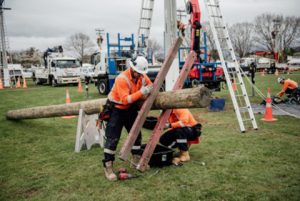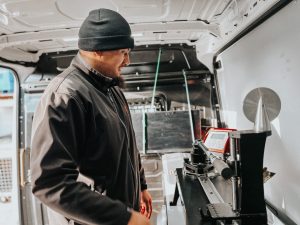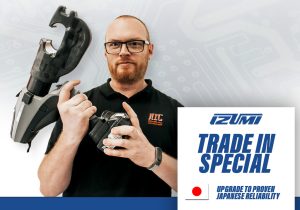This is a unique bridge-lifting exercise in South New Brighton. This bridge repair project was one of the more important in the suburbs of east Christchurch, where residents had been waiting for an essential infrastructure repair that would restore a quick route to the CBD. The project itself was quite remarkable in that the hydraulic system — which spread more than 7,200 tons of lift power across 72 separate hydraulic rams — was controlled from a single touch-screen display throughout the entire lifting operation. The new technology used for this bridge lift was the Durapac SYNCMASTER Synchronised Lifting System, which provides HTC with a unique capability to complete large-scale construction and infrastructure projects across both New Zealand and Australia.
This 67m long, 17m wide bridge’s abutments and piers had moved significantly during earthquakes leading to the bridge deck dropping and twisting. Repairs required the installation of temporary abutments and the use of high precision, computer controlled lifting equipment to straighten, level and raise the bridge deck.
An array of five centrally controlled pumps, each capable of controlling up to eight jacking points, was employed with high precision displacement encoders, to control the movement and correction of the 36 support points on the bridge. As a result of limited access and cylinder stroke, load support and cylinder re-packing strategies were also needed.
The bridge was successfully straightened, levelled and raised before being lowered onto temporary supports in its interim position.
The lifting process was completed well within the allowed timeframe, this was due to the careful planning and preparation of many contractors and their teams.
The use of Synchronous Lifting equipment was the only viable way to safely lift the structure with full, real time visibility of the loads and displacements, with the ability to limit maximum forces and keep adjacent lifting points within prescribed tolerances to minimise applied stresses within the structure.


